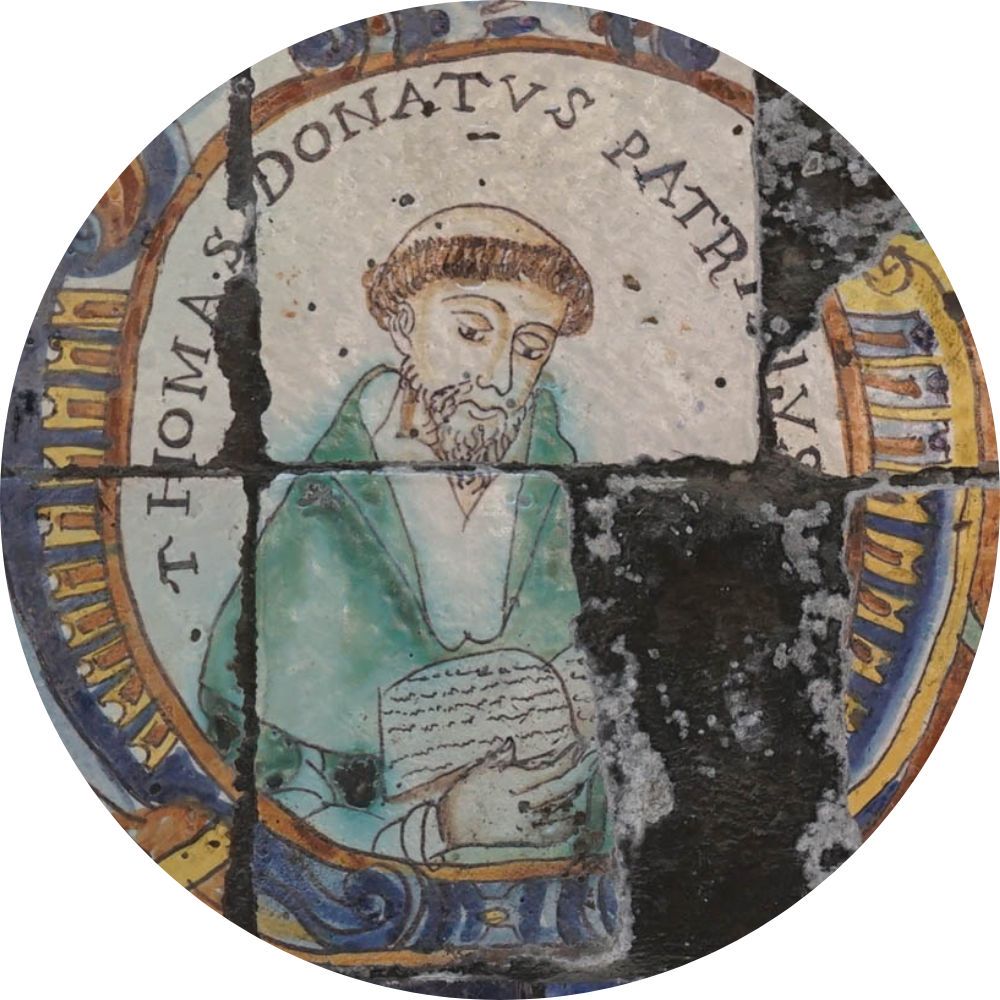Thomas Agni de Lentini
Thomas Agni de Lentino
(ca. 1200-1277)
He was born around 1200 in Lentino near Syracuse in the early 13th century. We do not know when he joined the Dominican order. However, it is known that after the end of 1231, already as a Dominican, he founded a monastery of preaching brothers in the former Benedictine monastery of Sant' Arcangelo, later named the convent of San Domenico Maggiore. He was its first prior. It was during his term as a prior that St. Thomas Aquinas joined the order in 1243. He became a provincial of the order's Roman province in 1255. That same year, Pope Alexander IV appointed him bishop of Bethlehem and papal legate in the Holy Land. He arrived there in the spring of 1259, and in the early 1260s he asked Western European countries to help the endangered Holy Land. He returned to Italy in 1264. On February 13, Pope Urban IV appointed him a papal vicar in Rome. On April 18, 1267, Pope Clement IV appointed him the archbishop of Cosenza. Five years later, on March 19, 1272, Pope Gregory X appointed him to the office of Latin patriarch of Jerusalem, and less than a month later he appointed him bishop of Acre and papal legate in the Holy Land. A large part of his effort was directed at seeking peace in the Holy Land, trying to reconcile feuding parties. As a patriarch, he settled the dispute over the kingdom of Jerusalem in favor of Hugo II of Cyprus and asked King Henry III of England for help in the Holy Land. He died on September 22, 1277, in Acre.
The Dominican tradition credits Thomas Angi with the authorship of several commentaries on the letters of St. St. Paul the Apostle, however, it is not certain whether he actually was the author of those works. He was certainly the author of a collection of sermons that survives in several manuscripts in various libraries. What is certain, on the other hand, is that he is the first biographer of St. Peter of Verona, whose biography he wrote in 1276.
Reading this figure from the tiles of the Santo Domingo Convention in Lima is not obvious. It seems to be about some patriarch. For Peter de Palude (c. 1275-1342), about whom we have no doubt, is similarly depicted among the notables of the Order of Preachers.
He never received worship and does not appear in any Dominican liturgical calendars.
Bibliography:
- Orlandi S., S. Pietro Martire da Verona – Leggenda di fra’ Tommaso Agni da Lentini nel volgare trecentesco, Firenze 1952.
- Redigonda A. L., Agni, Tommaso, [in:] Dizionario Biografico degli Italiani, t. 1, ed. A. M. Ghisalberti, Rom 1960.
- Kamp N., Kirche und Monarchie im staufischen Königreich Sizilien I. Prosopographische Grundlegung: =Bistümer und Bischöfe des Königreichs 1194-1266, Band 2: Apulien und Kalabrien, München 1975, pp. 856–862.
- Enzensberger Horst, Mendicanti nelle sedi vescovili della Calabria (fino alla morte di Martino V 1431), „Archivio Storico per la Calabria e la Lucania”, 84 (2018), pp. 57–93, esp. 65n.
- Rubin J., Benoit d’Alignan and Thomas Agni. Two Western Intellectuals and the Study of Oriental Christianity in Thirteenth-Century Kingdom of Jerzusalem, „Viator”, 44 (2013), issue 1, pp. 189-199.
- Rubin J., The Beginnings of the Study of Foreign Languages in the Dominican Order. Regulation, Implementation, and Impact, [in:] Making and Breaking the Rules Discussion, Implementation, and Consequences of Dominican Legislation, ed. C. Linde, London 2018, pp. 253-272.

